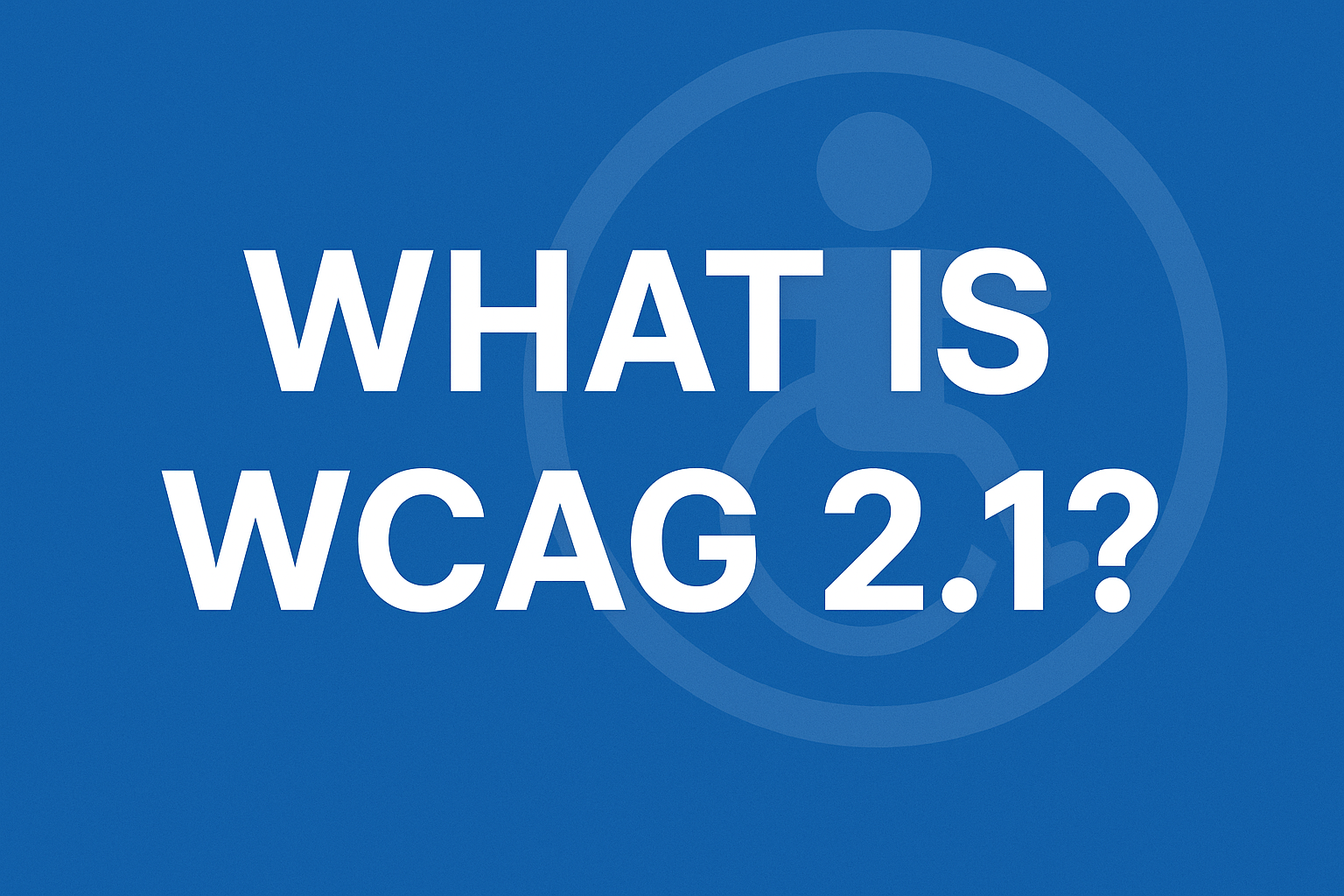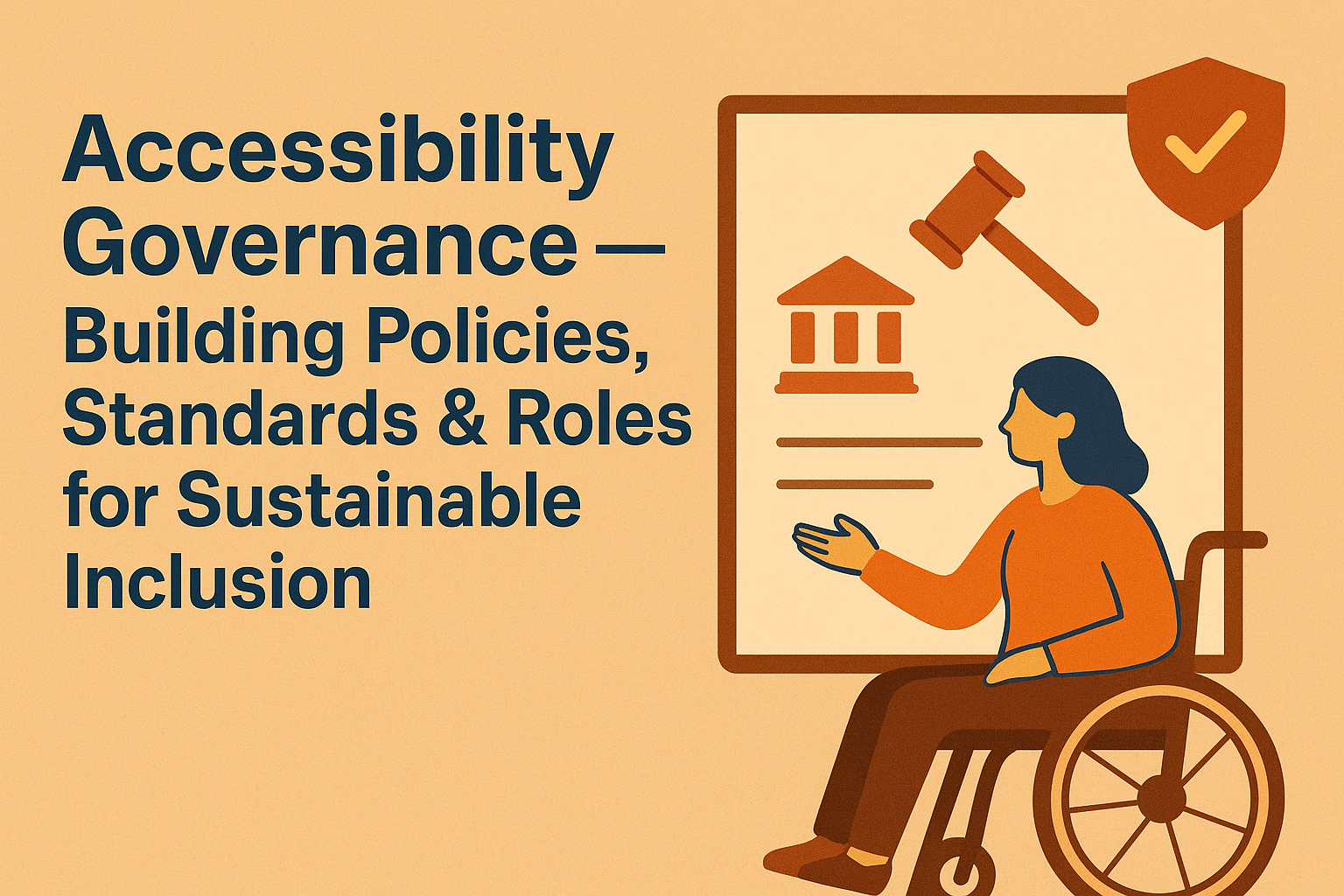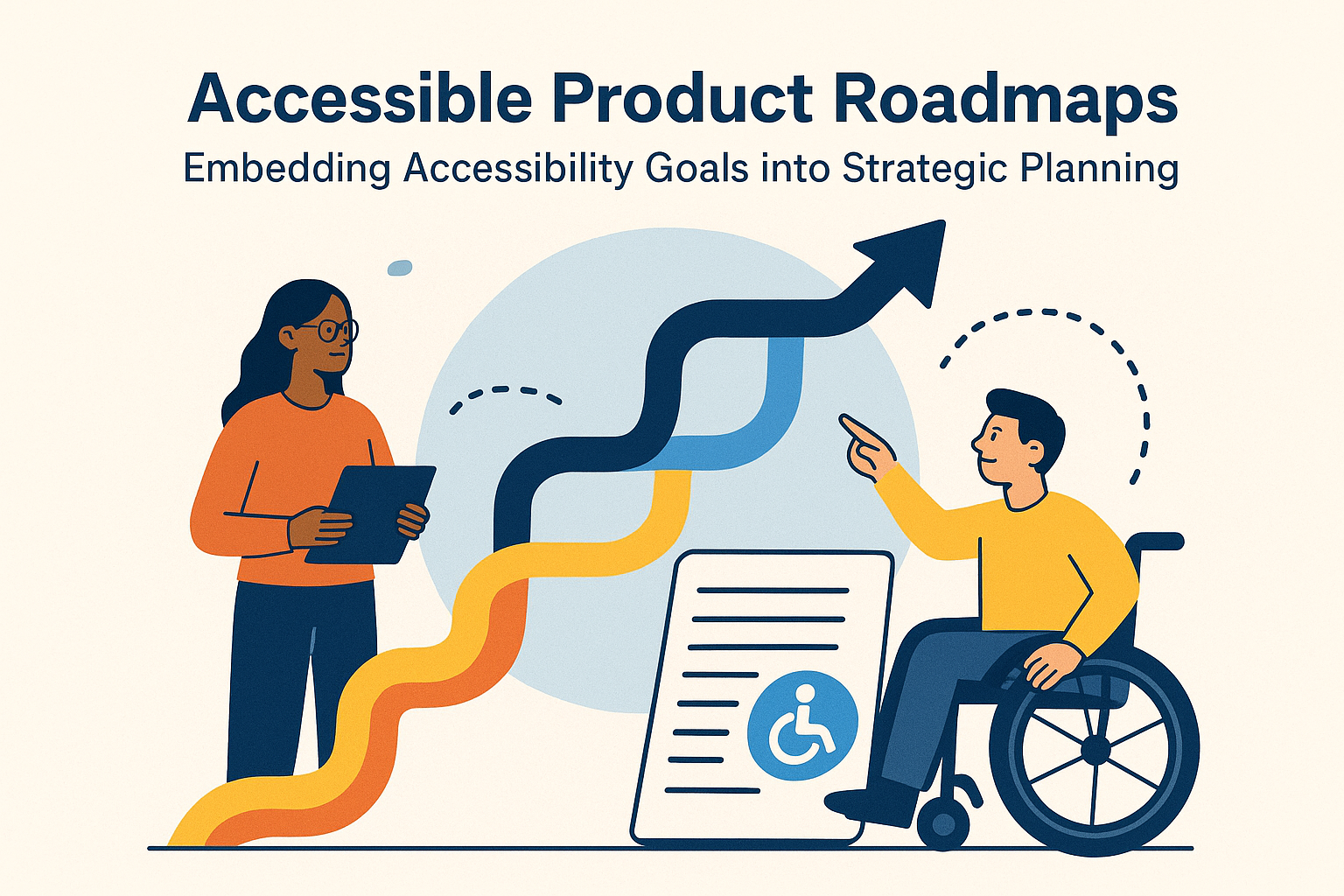What Is WCAG 2.1? — Web Content Accessibility Guidelines Explained
What Is WCAG 2.1? — Understanding Web Content Accessibility Guidelines
As the digital world continues to expand, the need for inclusive design has become more pressing than ever. The Web Content Accessibility Guidelines (WCAG) serve as the global standard for making websites usable for everyone—especially people with disabilities. WCAG 2.1, maintained by the World Wide Web Consortium (W3C), extends previous versions of the guidelines to cover a wider range of devices, interactions, and users.
This article breaks down what WCAG 2.1 is, why it exists, its key principles and levels, and how businesses can implement it effectively. We’ll also show you how Accesify.io helps organizations simplify compliance through automated accessibility scanning, reporting, and widgets.
What Is WCAG?
WCAG stands for Web Content Accessibility Guidelines. It is a set of international standards created by the W3C Web Accessibility Initiative (WAI) to ensure that digital content is accessible to people with disabilities—including visual, auditory, cognitive, and motor impairments.
The original version (WCAG 1.0) was released in 1999. Over time, technology evolved, leading to updates:
- WCAG 2.0 (2008): Introduced the four core accessibility principles—Perceivable, Operable, Understandable, and Robust (POUR).
- WCAG 2.1 (2018): Expanded on mobile accessibility, cognitive disabilities, and users with low vision.
- WCAG 2.2 (2023): Adds further refinements, especially around focus states and authentication accessibility.
What Is WCAG 2.1?
WCAG 2.1 is an update to WCAG 2.0 that introduces 17 additional success criteria addressing critical accessibility gaps left by the earlier version. It focuses on accommodating advancements in mobile technology, touch interfaces, and diverse user needs across different contexts.
Unlike some regulatory updates, WCAG 2.1 does not replace WCAG 2.0. Instead, it builds upon it—meaning that a website that meets WCAG 2.1 automatically satisfies 2.0 requirements as well.
Why WCAG 2.1 Was Introduced
Between 2008 and 2018, the web saw a massive transformation—mobile-first design, dynamic single-page apps, gesture controls, and responsive layouts became the norm. Yet millions of users with disabilities found these interfaces increasingly inaccessible. The W3C recognized this gap and added new guidelines to address:
- Better support for mobile and touch-based interactions.
- Improved readability for users with low vision or color contrast issues.
- Inclusive functionality for individuals with cognitive, learning, and motor disabilities.
The Four Principles of WCAG 2.1
All WCAG versions, including 2.1, are based on four foundational principles known as POUR:
1. Perceivable
Information and interface components must be presented in ways that users can recognize and understand—regardless of how they consume content. This includes alternatives for visual and audio information.
- Provide text alternatives for non-text content (alt text for images, captions for video, transcripts for audio).
- Ensure text is distinguishable with clear color contrast and resizable without content loss.
2. Operable
Users must be able to navigate, interact, and control the interface effectively without being restricted by device type or input method.
- Make all site functions accessible via keyboard (not just mouse or touch).
- Provide clear focus indicators and logical tab order.
- Give users enough time to interact with objects or complete forms.
3. Understandable
Information and operation of the interface should be easy to comprehend and predictable.
- Maintain consistent navigation patterns across pages.
- Offer error correction suggestions and clear validation messages.
- Use clear, concise, and plain language.
4. Robust
Content must remain accessible as technologies evolve. It should work reliably with current and future assistive tools such as screen readers and speech recognition software.
- Use semantic HTML and valid code structure.
- Ensure ARIA attributes are implemented correctly and enhance—not override—native elements.
WCAG 2.1 Levels of Compliance
WCAG success criteria are organized into three conformance levels: A, AA, and AAA. Compliance is often legally benchmarked to Level AA, which balances rigor and practicality.
- Level A: Basic accessibility requirements ensuring users can access content at a minimal level (e.g., keyboard accessibility, text alternatives).
- Level AA: More extensive compliance covering usability and design (e.g., color contrast, focus visibility, consistent navigation).
- Level AAA: Highest level of accessibility, typically used by organizations that want best-of-class inclusivity (e.g., sign language interpretations, enhanced text spacing, higher contrast ratios).
Most legal requirements, including those referenced under the ADA, EN 301 549, and EAA, mandate at least WCAG 2.1 AA compliance.
New Success Criteria Introduced in WCAG 2.1
Seventeen new success criteria were added to address technology shifts since 2.0. These new checkpoints expand inclusivity for mobile, cognitive, and low-vision users. Here's a summary:
| Category | Example Guidelines |
|---|---|
| Mobile & Touch Inputs | Label in Name (2.5.3), Motion Actuation (2.5.4), Target Size (2.5.5) |
| Low Vision & Color Contrast | Non‑Text Contrast (1.4.11), Text Spacing (1.4.12), Content on Hover or Focus (1.4.13) |
| Cognitive Accessibility | Identify Input Purpose (1.3.5), Reflow (1.4.10), Status Messages (4.1.3) |
Examples of WCAG 2.1 in Action
1. Responsive and Mobile-Friendly Content
Sites must maintain structure and readability on all screen sizes without forcing users to scroll in multiple directions (Success Criterion 1.4.10 - Reflow).
2. Visible Keyboard Focus
Interactive elements like links and buttons must clearly show focus when navigated via keyboard (2.4.7). This ensures users with motor disabilities or those who don’t use a mouse can keep track of their navigation.
3. Accessible Color Contrast
Text and essential graphics must meet minimum ratios (1.4.3). For example, light gray text on a white background fails readability standards.
4. Label in Name
Where an interface control has a visible label (like a “Submit” button), the accessible name should match the visible label to ensure screen reader clarity (2.5.3).
WCAG 2.1 vs. WCAG 2.2 — What’s Different?
WCAG 2.2 builds on 2.1, not replacing it. The newer version focuses on reducing cognitive barriers and improving interactions like drag-and-drop or authentication without requiring memorization. However, most organizations focus on WCAG 2.1 compliance as a current baseline until regulations universally adopt 2.2.
For complete adherence, Accesify.io testing tools analyze compliance across 2.0, 2.1, and early 2.2 criteria, ensuring your digital ecosystem stays future-proof.
How to Check WCAG 2.1 Compliance
Testing for WCAG 2.1 compliance combines both automated and manual methods:
- Run automated scans — Use tools like Accesify.io to detect common violations such as missing alt text, low color contrast, broken ARIA labels, or non-keyboard focusable items.
- Perform manual audits — Engage accessibility specialists to analyze visual focus, logical reading order, and contextual content clarity.
- Test with assistive technologies — Use screen readers (NVDA, VoiceOver), magnifiers, or switch controls to mimic diverse user interactions.
- Gather user feedback — Include people with disabilities in usability testing for real-world validation.
Practical Steps to Implement WCAG 2.1
Here’s how organizations can translate WCAG 2.1 principles into practice:
- Audit your current website: Start with a baseline accessibility audit using Accesify.io’s automated scanner. Identify issues across templates, layouts, and dynamic elements.
- Prioritize fixes: Focus on barriers impacting navigation and readability (e.g., focus states, text contrast, alt text).
- Integrate accessibility into design systems: Create global design tokens for color, typography, and spacing that conform to WCAG thresholds.
- Train your team: Educate designers, developers, and content creators about accessibility fundamentals.
- Monitor continuously: Schedule recurring scans with Accesify.io to catch regressions before they affect users.
Legal Importance of WCAG 2.1
WCAG is widely referenced in accessibility legislation worldwide:
- Americans with Disabilities Act (ADA): Though not explicitly naming WCAG, it’s the de facto benchmark in U.S. digital accessibility lawsuits.
- Section 508 (U.S.): Federal agencies must conform to WCAG 2.1 Level AA.
- European Accessibility Act (EAA): Effective across Europe from 2025, WCAG 2.1 forms its technical foundation.
- Canadian Accessibility Acts (ACA & AODA): Both align with WCAG 2.1 for policy and web development requirements.
By adopting WCAG 2.1 early, organizations minimize litigation risk and demonstrate good faith efforts toward digital inclusion.
How Accesify.io Helps You Comply with WCAG 2.1
Accesify.io was built to make compliance seamless. Whether you manage an enterprise web portal, SaaS dashboard, or e-commerce store, our accessibility ecosystem simplifies monitoring and remediation.
- ⚙️ Automated Scanning: Identify violations across WCAG 2.0, 2.1, and 2.2 levels AA/AAA using machine-learning powered analysis.
- 🧩 Customizable Accessibility Widget: Give users control to adjust text size, color contrast, cursor size, and reading preferences for comfort.
- 📊 Compliance Reporting: Generate exportable reports mapped to WCAG success criteria for team tracking and executive summaries.
- 🔁 Continuous Monitoring: Automated daily or weekly scans integrated into CI/CD pipelines to detect regressions.
- 🎓 Training & Remediation Guidance: Educational materials and expert consulting to help your developers fix root-cause issues efficiently.
Together, these tools ensure ongoing WCAG compliance — from development through production — without breaking your workflow.
The Future Beyond WCAG 2.1
The next generation, WCAG 3.0 (also known as “Silver”), aims to shift from pass/fail criteria to outcome-based scoring, emphasizing usability and perceptible user experiences. While WCAG 2.1 remains the current global standard, aligning early with accessible design practices sets organizations up for success in this more human-centric approach.
Key Takeaways
- WCAG 2.1 is the global benchmark for ensuring websites, applications, and digital content are accessible to all users.
- It adds 17 new success criteria addressing mobile, cognitive, and low-vision accessibility challenges.
- Compliance is generally expected at Level AA — balancing rigor and practicality.
- Testing, training, and continuous monitoring are essential for long-term adherence.
- Accesify.io automates this process with scanning, widgets, and proactive compliance workflows.
Conclusion: Accessibility as a Competitive Advantage
WCAG 2.1 is not merely technical documentation — it’s a framework for digital equality. Implementing it shows that your organization values inclusivity, empathy, and customer experience. Beyond avoiding lawsuits or meeting regulations, it’s about welcoming more people into your digital space.
Accessible design is future-ready design. Whether you’re a small business, SaaS startup, or global enterprise, accessibility should be built into every design, line of code, and content workflow. With automated testing, transparent reporting, and user-controlled widgets, Accesify.io empowers teams to meet WCAG 2.1 standards effortlessly and continuously.
Start your accessibility journey today: Scan your website for WCAG 2.1 compliance with Accesify.io — and ensure every visitor experiences your content without barriers.





